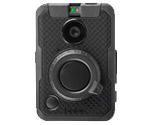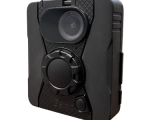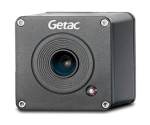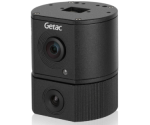
First Getac Technology Showcase a Success
December 7, 2021
Jackson, Mississippi Police Department Chooses Getac Video Solutions after Field Testing
December 7, 2021
James Murphy, the Director of Sales at Getac Video Solutions, knows law enforcement technology and gear. For the better part of a decade, he’s been working in the field, helping law enforcement by providing them with cutting-edge software and hardware. During his tenure, he has seen the world of policing change drastically, triggered by specific events, and the need for more transparency. As Murphy and Getac Video continue to navigate the ever-shifting field of law enforcement, Murphy took some time to look back at all of the changes he’s seen.
Law Enforcement Technology Shifts From Hardware To Software Focus
Murphy’s first job in the video industry was working for IRSA Video. They focused mostly on the software side of things, developing cloud-based solutions and software for law enforcement.
“Back in the day it was hard for us to sell [software],” he said because there used to be such a focus on hardware. “At IRSA Video we always thought we were ahead of our time because the technology of the software was further ahead than most solutions. We were making heads spin going into departments talking about cloud-based storage.” At that time, it was much more of a hardware sell for video, in-car and interview rooms.
However, the industry started to shift, and several years ago IRSA Video and Getac Technology Corporation partnered to supply comprehensive law enforcement technology. IRSA Video handled the software solutions while Getac Technology made the rugged hardware, and when Getac Technology acquired IRSA Video in early 2018, it became Getac Video Solutions.

“When you walk into agencies today there’s very little presentation on the actual hardware,” he said. End users assume that if you are at the table with them you have a camera which records HD video. A big change from when HD video used to be a key selling feature. “Today the conversation in an hour meeting is maybe 10 minutes on the hardware,” Murphy said. Instead, a majority of his team’s time is spent discussing the agency’s workflow and management of what Getac Video calls assets, videos and digital evidence.
Law Enforcement Technology Combined Solutions
Another new aspect of the industry is the way departments are buying their police technology.
“Take a step back even a year ago; you were either selling Body-Worn Cameras or you were selling in-car video,” Murphy said. That has changed and now the market trend is to purchase a combined solution which includes both these devices.
According to Murphy, this is because agencies have realized two important things. First, having a combined solution which includes both the BWC and in-car cameras can be more cost effective. Second, if you have one solution for your BWC with data storage and another provider or manufacturer for your second solution with a different backend system, you will be spending a lot of time retrieving video and data from two different systems when you are prepping for trials. That time could be better spent in other ways.

Law Enforcement Technology Driven By Market and Public Demands
Police technology continues to evolve, and publicized incidents continue to affect the industry simply because the market and the public demand it.
“When the market changes… [it] starts to demand that your devices function this specific way,” Murphy said. “Now people are paying attention and they say ‘hey, your body-worn must be able to this, this, and this.’”
Unfortunately, it isn’t as easy to make those changes to technology as you might think.
“Agencies are typically around three years behind in technology compared to what the consumer world has adopted,” Murphy said. There are several reasons for this, but two really stick out to Murphy. The first, is simply that technology moves quickly and law enforcement agencies don’t always have the budget to spend on new technologies. They often have to work with what they’ve got. Second, the technology has to be conform to specific standards such as FBI’s Criminal Justice Information Service (CJIS), to make sure it is safe and capable to be used in an evidential manner. While you have probably been saving your cell-phone photos to the cloud for years, that same system wouldn’t be secure enough to maintain the chain of evidence if used by a police department.
Getac Video’s Law Enforcement Technology
Industry changes may be daunting for some, however, Murphy is extremely confident Getac Video will continue to adapt and flourish.
“We actually are at an advantage,” Murphy said about Getac Video. “We not only design and manufacture the product but we also own the software that goes in the device.” That is a huge advantage over competitors who don’t have the end-to-end solution and instead have to partner with other companies to manufacture certain aspects of their products or develop their code.
“[At Getac Video] we sit down as a development team,” Murphy said, which includes both hardware and software, and they design and plan. This unique combination of having everything done by one company allows Getac Video to develop and put a product to market a lot faster than others, and to do it well. Learn more about Getac Video’s software solutions and rugged hardware on our website.





